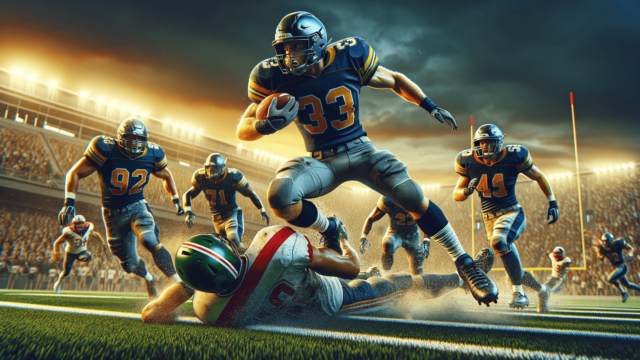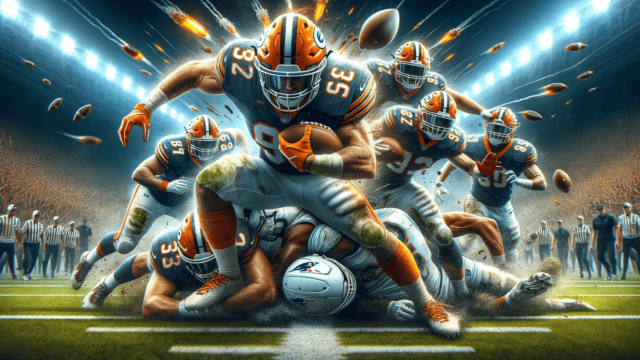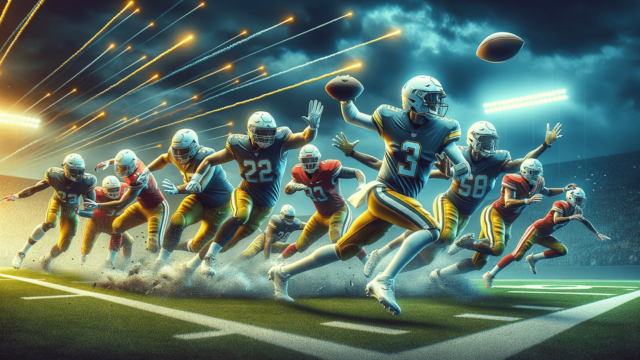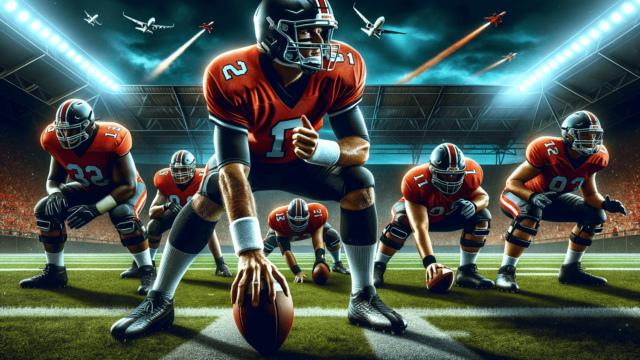
A sack in football refers to the action of tackling the opposing team’s quarterback behind the line of scrimmage before they can throw a forward pass. It is a defensive play aimed at disrupting the offense’s strategy and results in a loss of yardage for the offense.
Understanding a Sack in Football
A sack in football is a significant defensive play that occurs when a defender tackles the quarterback behind the line of scrimmage before they can throw a forward pass. This play disrupts the offense’s strategy and causes them to lose yardage.
Key Elements of a Sack
Tackling the Quarterback
To achieve a sack, a defensive player must successfully tackle the opposing team’s quarterback. This involves bringing the quarterback to the ground or forcing them out of bounds, thus stopping the play.
Behind the Line of Scrimmage
A sack must occur behind the line of scrimmage, which is the imaginary line that separates the offensive and defensive teams before the play begins. If the quarterback is tackled at or beyond the line of scrimmage, it is not considered a sack.
Before a Forward Pass
A crucial element of a sack is that it happens before the quarterback can complete a forward pass. If the quarterback is able to throw the ball before being tackled, it is not a sack, and the result of the play depends on whether the pass is completed or not.
Impact of a Sack on the Game
Loss of Yardage for the Offense
A sack results in a loss of yardage for the offensive team. The more sacks a defensive team accumulates, the more difficult it becomes for the offense to advance down the field and score points.
Disrupted Offensive Strategy
Sacks can cause significant disruptions to an offense’s strategy by creating unfavorable down and distance situations. This forces the offensive team to adjust their planning and may lead to more predictable play-calling.
Momentum Shift
A well-executed sack can shift the momentum in favor of the defensive team, as it demonstrates their ability to pressure and contain the opposing quarterback. This can energize the defense and deflate the confidence of the offense.
Sack Statistics and Records
Tracking sack statistics and records is an essential part of analyzing individual and team performances in football. Sack data can provide insights into a team’s defensive proficiency and help identify standout players who are adept at pressuring and disrupting opposing quarterbacks.
Individual Player Sack Records
Many of the most highly regarded defensive players in football history built their legacies primarily as pass-rushers who accumulated impressive career sack totals. Some noteworthy NFL sack records held by individual players include:
- Most career sacks: 200 by Bruce Smith
- Most sacks in a single season: 22.5 by Michael Strahan
- Most sacks in a single game: 7 by Derrick Thomas
Team Sack Records
Similarly, some teams have built reputations as relentless sack-producing defenses, often known by colorful nicknames such as “The Steel Curtain” of the Pittsburgh Steelers or “The Purple People Eaters” of the Minnesota Vikings. An example of a team sack record is the 72 sacks by the 1984 Chicago Bears in a single season.
Factors Contributing to a Successful Sack
Defensive Linemen and Schemes
It’s essential for a team to have talented defensive linemen who possess the physical attributes and skills required to penetrate offensive lines and pressure quarterbacks. Employing effective defensive schemes that create mismatches and confusion for offensive linemen can further improve a team’s ability to generate sacks.
Linebackers and Defensive Backs
While they may not always get the same level of attention as the defensive linemen, linebackers and defensive backs can also contribute to a successful sack. Their ability to cover offensive receivers can force the quarterback to hold onto the ball longer, giving pass-rushers more time to penetrate the backfield. Additionally, linebackers and defensive backs may participate in blitzes, where they rush the quarterback to generate increased pressure.
Coverage and Containment
It is crucial for the defensive unit as a whole to maintain solid coverage and containment during a play. This ensures quarterbacks have fewer passing options and discourages escape routes from the pocket, increasing the likelihood of a sack.
Frequently Asked Questions
After reading about sacks in football, readers may have some questions regarding terminology, strategy, and related topics. In this section, we address some common questions related to the sack and its role within the game of football.
What is the difference between a sack and a tackle for loss?
A sack is a specific type of tackle for loss, which occurs when a defensive player tackles the quarterback behind the line of scrimmage before they can throw a forward pass. Conversely, a tackle for loss encompasses any tackle that results in negative yardage for the offensive team, including running plays or plays involving other positions like running backs or wide receivers.
How does a sack affect an offense’s downs and distance?
A sack increases the total yards the offense needs to gain on the remaining downs for a new set of downs or first down. As a result, a sacked quarterback can face a more challenging situation to convert the subsequent plays, often leading to less favorable or more predictable play-calling.
Can a quarterback intentionally ground the ball to avoid a sack?
A quarterback may attempt to ground the ball intentionally to avoid a sack. However, this action can result in an intentional grounding penalty if it does not meet specific criteria. To avoid the penalty, the quarterback must throw the ball towards an eligible receiver or out of bounds, and the throw must travel beyond the line of scrimmage.
How do defensive coordinators design plays to achieve more sacks?
Defensive coordinators may use various tactics to increase sack numbers, such as creatively employing blitzes, utilizing stunts, designing unique formations, and adjusting the lineup to create mismatches against offensive linemen. These strategies help generate confusion and increased pressure, giving the defensive line an advantage over the quarterback and offensive line.
Are sacks the only measure of an effective pass-rusher?
No, sacks are not the only measure of an effective pass-rusher. While sacks are a significant statistic, other factors like quarterback pressures, quarterback hits, and hurries also contribute to gauging a pass-rusher’s impact on the game. These measures can reveal a player’s ability to consistently disrupt the quarterback and the opponent’s passing game, even if they do not always result in a sack.
Featured Posts
- No pillar pages found.





